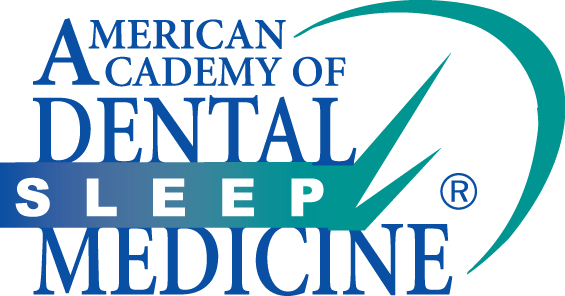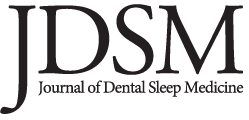
Editorial 1, Issue 11.4
Big Tech and Big Pharma Have Entered the Sleep Field and are Here to Stay…
http://dx.doi.org/10.15331/jdsm.7354
Jean-François Masse, DMD, MSc, FACD, Diplomate, ABDSM
Editor-in-Chief Journal of Dental Sleep Medicine
Universite Laval, Quebec City, Quebec, Canada
Since the last editorial, two events have emerged that are likely to have a major impact on how obstructive sleep apnea (OSA) is identified and treated.
Major Event #1: Big Pharma Enters the Scene
In June, the New England Journal of Medicine (NEJM) published the Surmount-OSA study.1 This study compared the efficacy of tirzepatide (Zepbound), a GLP-1 agonist, to a placebo in obese patients with moderate to severe OSA. Some patients used CPAP (continuous positive airway pressure) therapy, while others did not. The results of this initial study are astonishing. Up to 50.2% of tirzepatide recipients achieved clinically meaningful reductions in the apnea-hypopnea index (AHI) to levels where PAP therapy might not even be necessary.
With such compelling results, and given the questionable adherence to CPAP among patients, some important questions arise:
- Could the first-line treatment for obstructive sleep apnea become a GLP-1 agonist medication like tirzepatide (Zepbound) or the competitor, semaglutide (Ozempic)?2
- Since these medications impact sleep apnea, obesity, diabetes, and blood pressure, will follow-up care for these patients be managed by pulmonologists, cardiologists, internists, or general practitioners?
- Will overweight or obese patients already using CPAP start to be treated with medication? It's estimated by the National Council on Aging that there are millions of CPAP users in the United States,3 many also with comorbidities also treated with GLP-1 agonists.
- How will CPAP companies position themselves in light of this new approach?
- What are the long-term implications of this new therapy? Will patients stay on the medication for life? If not, will their sleep apnea return?
- What will be the role of dental appliances? Can we improve success rates by reducing patients' weight? Could we offer dental appliance treatments to more obese patients, a group with historically lower success rates? Should we consider partnering with pharmaceutical and CPAP companies to promote combined treatments with dental appliances or should we focus on collaborating directly with doctors who treat sleep apnea?
Event #2: Big Tech Enters the Scene
Earlier last month, Apple introduced the new Apple Watch Series 10 and announced that a software update for Series 9 and Ultra2 watches would allow them to now detect whether users may be at risk for sleep apnea.7 This follows a similar announcement from Samsung in February. Given that an estimated 1 billion8 people worldwide suffer from OSA, with the vast majority undiagnosed, it was only a matter of time before Apple and Samsung entered the sleep apnea market following the introduction of their sleep tracking features.
The Apple Watch detects signs of sleep apnea by monitoring movement via the watch’s accelerometer. In the United States, It does not use photoplethysmography (PPG) to measure oxygen saturation due to a patent dispute over the technology used in Apple’s latest oxygen sensors.9 Samsung's watch, released earlier this year, uses its PPG sensor to detect sleep apnea.
Are these legitimate diagnostic tools? The FDA clearances for both indicate that they are only intended to provide a notification of the risk of sleep apnea in users who are undiagnosed and are not intended to provide a standalone diagnosis, replace traditional methods of diagnosis, assist clinicians in diagnosing sleep disorder, or be used as an apnea monitor.10 Apple has tested the software over approximately 11,000 nights,7 indicating significant validation efforts. However, whether it is reliable is less important at this stage. Good or bad, the introduction of this tool, which will improve over time with AI-assisted software, will likely have a profound impact on awareness of sleep apnea and the practice of dental sleep medicine in the near future.
Since its release in September, Apple’s OSA detection feature has been covered by every major news outlet, making it one of the best awareness campaigns for OSA in recent years. Consumers can now get a fashionable watch with multiple features, including OSA detection. If worn during sleep, the watch tracks sleep behavior over time, requiring at least 10 nights of data within a 30-day period before making a conclusion. Watch users can then see if they might have a potential sleep problem and consult a physician, if necessary. Therefore, we can expect an increase in sleep apnea consultations as the technology improves and becomes more affordable. As patients come to see us, we will easily be able to see if they are wearing an Apple Watch and begin a conversation about their sleep habits.
Watch users will hopefully consult with a healthcare provider sooner, allowing OSA to be treated in its early stages when it is milder, potentially favoring the use of oral appliances and lifestyle changes.
As we anticipate more consultations several key points arise:
- As Apple collects more data, is there a future where these watches can become diagnostic tools?
- With tens of millions of Apple Watch users, how will the vast amount of sleep data collected be used to improve patients' lives? Will patients even wear their watches at night or use it as a time to charge them? Will awareness result in action and patients seeking treatment? Will Apple leverage this data to develop new products for its own benefit? Will dentists, dental schools, and appliance manufacturers have access to this population data to improve treatment outcomes?
- As dental sleep medicine providers, is it important to consider how we can use the watch to encourage patients to seek treatment and be active participants in their treatment?
With these emerging technologies and treatment options, can we expect a radical shift in how obstructive sleep apnea is identified, diagnosed and treated? Probably. Only time will tell where this is heading, but we need to be ready.
REFERENCES
- Malhotra A, Grunstein RR, Fietze I, et al. SURMOUNT-OSA investigators. Tirzepatide for the treatment of obstructive sleep apnea and obesity. N Engl J Med. 2024. Epub ahead of print.
- Ozempic homepage. 2024. Accessed October 7, 2024. www.ozempic.com
- Ling V. Sleep apnea statistics and facts you should know. National Council on Aging. May 8, 2024. Accessed October 7, 2024. https://www.ncoa.org/adviser/sleep/sleep-apnea-statistics/
- United States Sleep Apnea Devices Market analysis 2024-2030: Introduction of advanced, user-friendly devices that improve comfort and efficacy is key for growth. Yahoo Finance. July 1, 2024. Accessed October 7, 2024. https://finance.yahoo.com/news/united-states-sleep-apnea-devices-102100832.html?guccounter=1&guce_referrer=aHR0cHM6Ly93d3cuZ29vZ2xlLmNvbS8&guce_referrer_sig=AQAAANaxkp6gD_hq_bImZc38L4CJ6B86pWCFXEIXGDn7-23LyYMj7aPfs8WxbmMGuF4FrOWJF5PPgQlAEvijRvmFLia9CkXmGihmVF9i422Wv933HgHZ3cV-F_bRN0WHyJ0XBm0iGWw_F2chlt1o6JrMRQGD_plUXS-CbFai9ow-O5nV
- Wilson D. Europe’s largest companies by market capitalization, 2024. CEO World. February 14, 2024. Accessed October 7, 2024. https://ceoworld.biz/2024/02/14/europes-largest-companies-by-market-capitalization-2024/
- Marketing capitalization of Mercedez-Benz (2024). Accessed October 7, 2024. https://companiesmarketcap.com/cad/mercedes-benz-group/marketcap/
- Eadicicco L. CNET spoke with Apple's Deidre Caldbeck and Matt Bianchi about the Apple Watch's newest health tracking feature, which took 11,000-plus nights to perfect. CNET. September 17, 2024. Accessed October 7, 2024. https://www.cnet.com/tech/mobile/inside-the-apple-watch-series-10s-new-sleep-apnea-detection-feature/
- Benjafield AV, Ayas NT, Eastwood PR, et al. Estimation of the global prevalence and burden of obstructive sleep apnoea: a literature-based analysis. Lancet Respir Med. 2019;7(8):687-698.
- So A. Review: Apple Watch series 10. Wired. September 17, 2024. Accessed October 7, 2024 .https://www.wired.com/review/apple-watch-series-10/
- Cerullo M. FDA approves Apple Watch sleep apnea detection tool. CBS News. September 16, 2024. Accessed October 7, 2024. https://www.cbsnews.com/news/apple-watch-sleep-apnea-detection-tool-fda-approval/
CITATION
Masse, JF. Big tech and big pharma have entered the sleep field and are here to stay…. J Dent Sleep Med. 2024;11(4)SUBMISSION AND CORRESPONDENCE INFORMATION
Submitted in final revised form October 7, 2024.Address correspondence to: Jean-François Masse, DDS, MSc, FACD, D.ABDSM, Professor, Universite Laval, 2780 Masson #200, Quebec City, QC, G1P 1J6, Canada; Tel: 418871-1447; Fax: 418-871-4983; Email: jean-francois.masse@fmd.ulaval.ca
